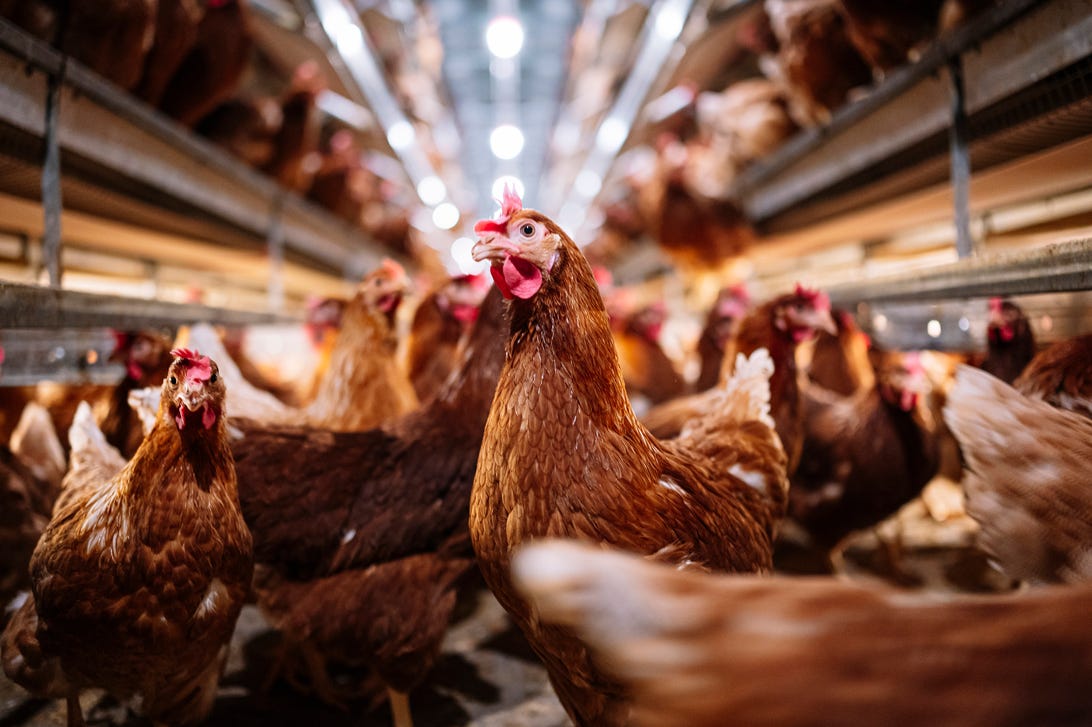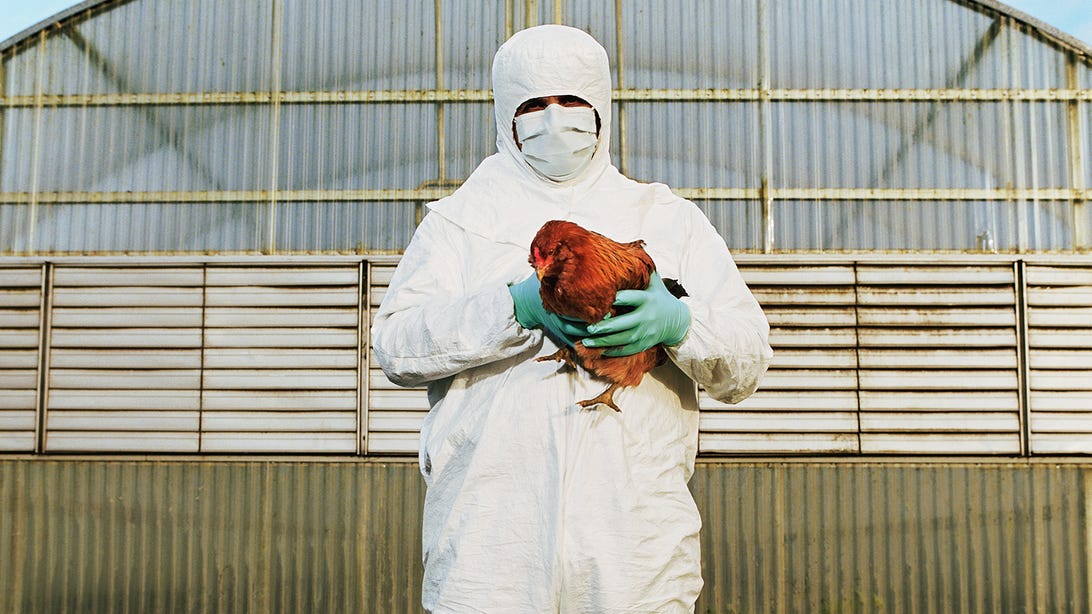

Since a case of highly pathogenic bird flu was confirmed in a duck from South Carolina early this year, millions of birds have died in what's been the deadliest avian influenza surge in the US since the 2014-15 outbreak.
Despite the damage to the poultry industry and fears for zoo animals, the bird flu presents a low risk to public health, according to the US Centers for Disease Control and Prevention. So far, the CDC says, the current bird flu virus lacks the mutations necessary to spread to people easily, and it may also lack the changes that have caused severe illness in people in the past.
But in past years, those rare human cases of avian influenza (which have mostly been in people who work directly with birds) have killed more than half of the people who had reported infections. Given the potential public health threat, even if it remains low, the CDC and USDA are monitoring the outbreaks in flocks of birds and have guidance on how to interact with birds, and how to protect yourself.
Here's what to know.
What is the bird flu?
The bird flu, aka avian influenza, is the disease caused by infection with influenza type A viruses. These viruses can circulate among birds around the world and have infected humans in rare cases, mostly those who work directly with infected birds. If the viruses mutate enough, the public health fear is that they might make the jump to spread among humans. The bird flu was first detected and controlled in 1997, but reemerged in 2003 and started spreading widely among birds.
Influenza viruses that cause the bird flu are either "low pathogenic" or "highly pathogenic." Highly pathogenic bird flu can cause severe disease or death in poultry, and it's those cases that the USDA is reporting.
The predominant bird flu virus in the world is H5N1, according to the CDC.
The World Health Organization reports four types of influenza viruses: A, B, C and D. But type A viruses, which occur in both humans and different kinds of animals, are the biggest threat to public health, the WHO says. The "swine flu" of 2009's pandemic was caused by a type A virus. Seasonal flu viruses in humans are caused by type A and type B viruses.

Is bird flu deadly?
More than 800 human cases of the bird flu have been reported to the WHO since 2003, according to a Feb. 18 report from the agency. Although human bird flu cases have remained rare, more than half of people infected with the virus have died.
Because of the serious health threat, the WHO, CDC and United States Department of Agriculture are closely monitoring outbreaks in the US and in other countries. But, the WHO noted in its February report, the recent bird flu cases do not appear to pose a greater public health threat this year than in previous years.
Where in the US is the bird flu? How is it being monitored?
The bird flu has been detected and reported by the USDA in wild and domestic birds in roughly half of US states. Most outbreaks in flocks of birds have occurred on the East Coast and in the Midwest.
Henry Niman, a biochemist in Pittsburgh, has been tracking the outbreak (as reported by The New York Times), and his map offers a visual representation of the outbreak across the country.
The first case was in a wild bird in South Carolina. Other cases were reported in some backyard flocks (that is, not part of a commercial poultry farm) as well as some poultry farms, where animals are raised for food. Any birds of the flocks that have cases of avian flu will not enter the food system, the USDA said.
"Wild bird surveillance provides an early warning system for the introduction and distribution of avian influenza viruses of concern in the United States," according to the agency. To monitor outbreaks, the USDA said it is collecting samples in 25 different states, coordinating with State Departments of Wildlife or Natural Resources and more.

How do you catch bird flu?
Birds can shed avian influenza virus in their saliva, feces and mucus, according to the CDC. Humans can get sick by breathing in the virus, or by touching their eyes, nose or mouth. Most human bird flu cases have been reported in people who work directly with birds.
To avoid getting sick, avoid contact with wild birds, don't touch dead or sick birds you see, and avoid visiting bird markets or farms if you're traveling to another country, according to the CDC.
Extra precautions or monitoring may be taken if you work directly with birds, if you hunt birds or if you're a health care worker. If you have contact with an infected bird, contact your local or state health department. Here's a directory of local health departments in the US.
To avoid contamination from poultry of any kind, make sure to properly handle your poultry and eggs, and thoroughly cook them to 165 degrees Fahrenheit, the USDA says, to kill bacteria and viruses.
You can also report a dead bird to your local health department or wildlife agency, which will help public health officials track not only the bird flu but also viruses such as West Nile virus. Reporting dead birds may be especially important if you see more than one of them.
So long as humans eat birds and other animal products, as well as live and work among them, there might be a risk for viruses to jump from species to species. And the threat of bird flu causing an outbreak among people isn't new to 2022.
But with careful monitoring and attention to public health, the hope is that we'll avoid another pandemic with a large loss of life.
The CDC has said it has "produced a candidate vaccine virus," if it's needed, in response to a potential public health threat.
The information contained in this article is for educational and informational purposes only and is not intended as health or medical advice. Always consult a physician or other qualified health provider regarding any questions you may have about a medical condition or health objectives.









 Add Category
Add Category